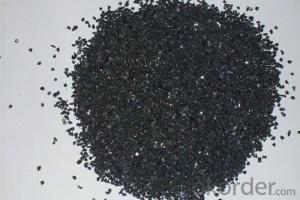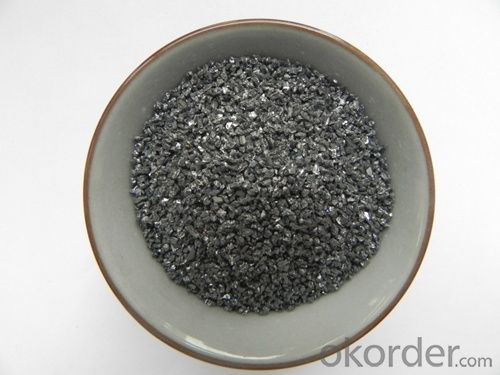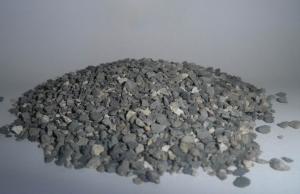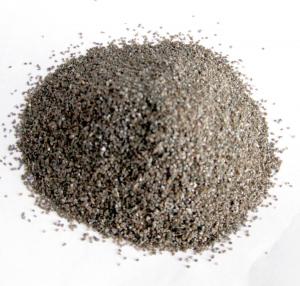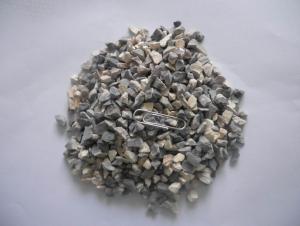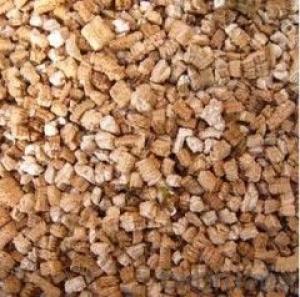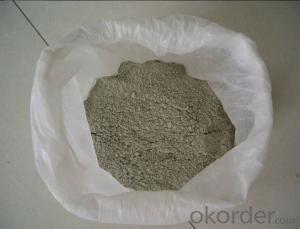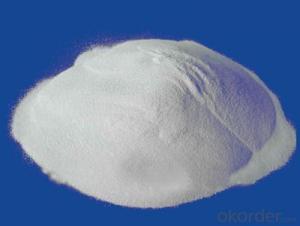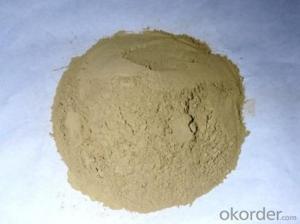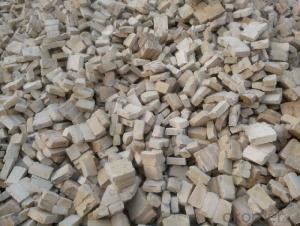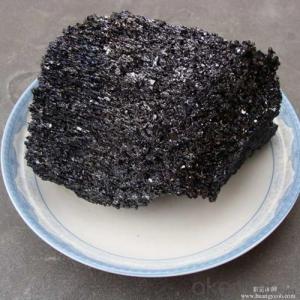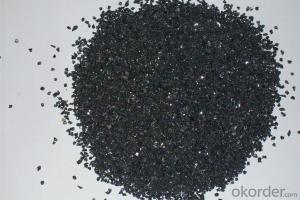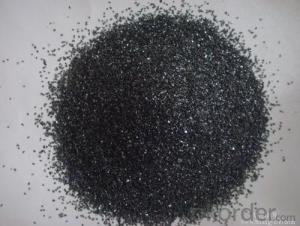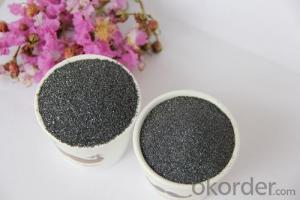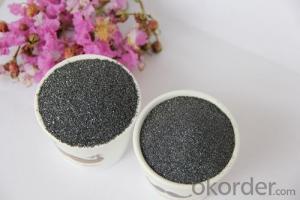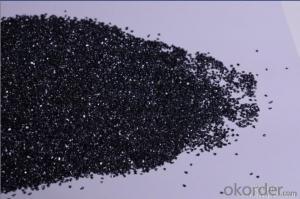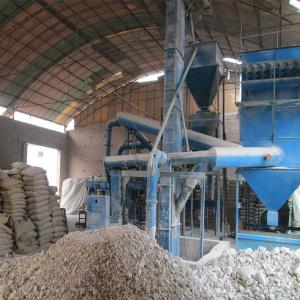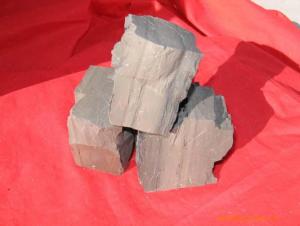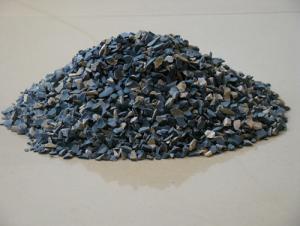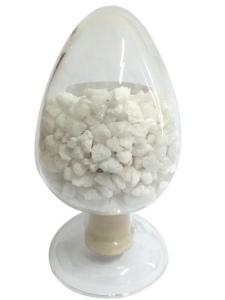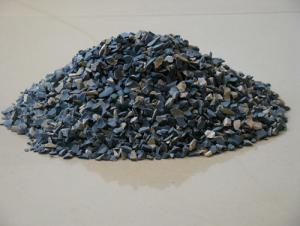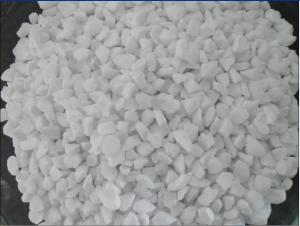Raw Materials for Refractory:Sic >98% F10-F1600 Black Silicon Carbide for Refractory & Abrasives by CNBM
- Loading Port:
- China main port
- Payment Terms:
- TT OR LC
- Min Order Qty:
- 25 m.t.
- Supply Capability:
- 2000 m.t./month
OKorder Service Pledge
OKorder Financial Service
You Might Also Like
Packaging & Delivery
| Packaging Details: | 25kg/bags , jumbo bags for black silicon carbide |
| Delivery Detail: | within 15 days of black silicon carbide for refractory |
SIC >98% F10-F1600 black silicon carbide for refractory&abrasives
Product Description
Black Silicon Carbide is produced in a high temperature electric resistance-type furnace from a mixture of quartz sand and petroleum coke.
The hardness of black silicon carbide is greater than fused alumina but less than synthetic diamond.
Its mechancial intensity is greater than fused alumina, but is brittle and very sharp. The mineral has some electrical and heat conductivity.
Black silicon carbide is typically used for machining or finishing cast iron ,non-ferrous metals, stone, leather, rubber, and other materials where sharp cutting characteristics are important .
Black Silicon Carbide is brittle and sharp and has electrical and heat conductivity in some degree.
Aplications :
Black Silicon Carbide is suitable for make grinding wheels, cutting wheels, mounted wheels, oil stone, abrasive media, and also suitable for surface grinding, lapping or polishing.
The abrasive products made of it are suitable for working on Cast Iron, Non-ferrous Metal, Rock, Leather, Rubber, Wood, Ceramic, etc.
Black Silicon Carbide is also broadly used as high-grade refractory material and metallurgical additive.
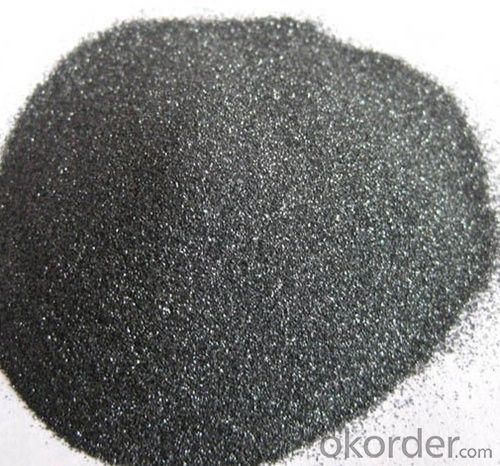
- Q: How many kinds of A-level fireproof and thermal insulation materials are there?
- A-level non-combustible materials are mostly inorganic thermal insulation materials, as well as some organic compound materials can also be non-combustible; but if the convenient construction is required, panels are exempted, you can only choose inorganic thermal insulation mortar.
- Q: Does anyone know the refractory temperature of fire-resistant glass?
- Ordinary glass will be completely liquefied in the furnace of about 1100 degrees for half an hour and will not deform below 600 degrees. toughened glass fire-resistant glass is the product of ordinary glass after being processed Glass will mainly burst after encountering fire. When unevenly heated or encountering sudden drastic changes in temperature, ordinary glass will burst if the sharp temperature difference is over 70-120 degrees and toughened glass will burst at 200 degrees. It is not yet clear of the bursting temperature for the refractory glass. If the overall glass is not heated evenly, it will have no significant change below 600 degrees, and it will deform with the increase of temperature until melting. The fire-resistant time of the glass you said is the time to heat the glass into the extreme temperature differences it can endure, which should not be more than 10 minutes
- Q: How to use fireclay?
- Fire-resistant adhesive material is needed, its effect equals to the cement. Cement will certainly do.
- Q: which kind of material should be used in fireproofing cabinet?
- Here are a few good materials: 1. The mineral wool board, glass wool board: it mainly tales mineral wool, glass wool as insulation materials. It's non-combustible, light weight and has good high temperature resistance, but there are shortcomings ① short?fiber will harm the human respiratory system, ② poor sheet strength, ③ poor barrier property of sheet for smoke of fire disaster, ④ poor decorative properity, ⑤large installment and construction work. Thus, most of the boards were sheets that take inorganic anchoring material as base material, glass wool as reinforcing material. 2. cement board: Cement board has high strength and wide sources. It is often used in fireproof suspended?ceiling and partition in the past, but it has poor fire resistance and is easy to burst and lose protective function , which will limit it's applications. Cement concrete component has good thermal insulation and sound insulation properties, and it can be used as partition and roof board. Fiber reinforced cement board and other improved varieties appear in the construction?materials market, and they are high strength and have good fire resistance, but their disadvantages are poor toughness, large alkalinity and poor decoration effect. 3. perlite board, cenosphere board, vermiculite board: It's a kind of hollow plate that takes low alkalinity cement as base material, perlite, glass beads, vermiculite as the aerated filling material, and is made by adding some auxiliary. It has characteristics of light weight, high strength, good toughness, fireproofing and thermal insulation, easy for construction,etc. and it can be widely used in high-rise building frame compartment, household, bathroom, kitchen, communication pipe and other non-load bearing areas.
- Q: How to do environmental impact assessment for refractory Co., Ltd.
- 1, first of all, the EIA unit and the construction party signed the EIA contract. The contract is only legally valid. Generally speaking, the contract will indicate that the first payment has been received before the work begins.2. Collecting information. This is a very important link in the EIA, which is directly related to the quality of the eia. There is a great variety of data,Generally, the construction party will write a list of environmental impact assessment information.
- Q: what is the original materials of fireproof coating?
- Fire retardant coating is composed of the base materials (that is film forming substance), pigments, ordinary coating additives, fire retardant agent and dispersion medium.
- Q: What are the raw materials of refractory?
- Of course, different types have different raw materials: Magnesite (the electric?smelting: alkaline refractory, magnesia-carbon bricks, alkaline, high-purity) + crystalline flake graphite + phenolic resin + additive (silicon powder, aluminite powder, silicon carbide powder, or high-temperature asphalt,etc.) , acidic refractory: The neutral is not easy to answer. such as. You can check out the classification, such as
- Q: how to classify Insulating Refractory ?
- General materials have test reports, where fire rating is labled.
- Q: Does anyone know the fire endurance of steel stud partition?
- Indeed ① Dragon Brand gypsum board fire-resistant partition: Its fireproofing extreme time is 4 hours, suitable for firewalls of a variety of public buildings, public exit passageway and other partitions, which meets the first level of fire protection standard ② fireproofing and pressure-resistant partition: Refers to the partition which can withstand momentary gas shocks of over 1200pa , mianly used for the room partition with inert gas fire-fighting needs, such as equipment rooms. The pressure-resistant degree of fireproofing and pressure-resistant partition of Beixin Building Materials can be up to 4800Pa, especially suitable for high-rise fireproofing.
- Q: what textures of furnace refractories are good?
- Common ceramics use ordinary clay and high alumina bricks, as well as thermal insulation bricks, calcium silicate boards and fiber cotton. The vessels fired with potter's earth are called pottery, and the vessels fired with porcelain clay are called porcelain. Ceramic is generic term of pottery, stoneware and porcelain. The objects taking the two different types of clay as the raw materials, like, potter's earth and porcelain clay, and made through the technological process of ingredients, forming, drying and roasting, ect. can be called ceramics.
Send your message to us
Raw Materials for Refractory:Sic >98% F10-F1600 Black Silicon Carbide for Refractory & Abrasives by CNBM
- Loading Port:
- China main port
- Payment Terms:
- TT OR LC
- Min Order Qty:
- 25 m.t.
- Supply Capability:
- 2000 m.t./month
OKorder Service Pledge
OKorder Financial Service
Similar products
Hot products
Hot Searches
Related keywords
